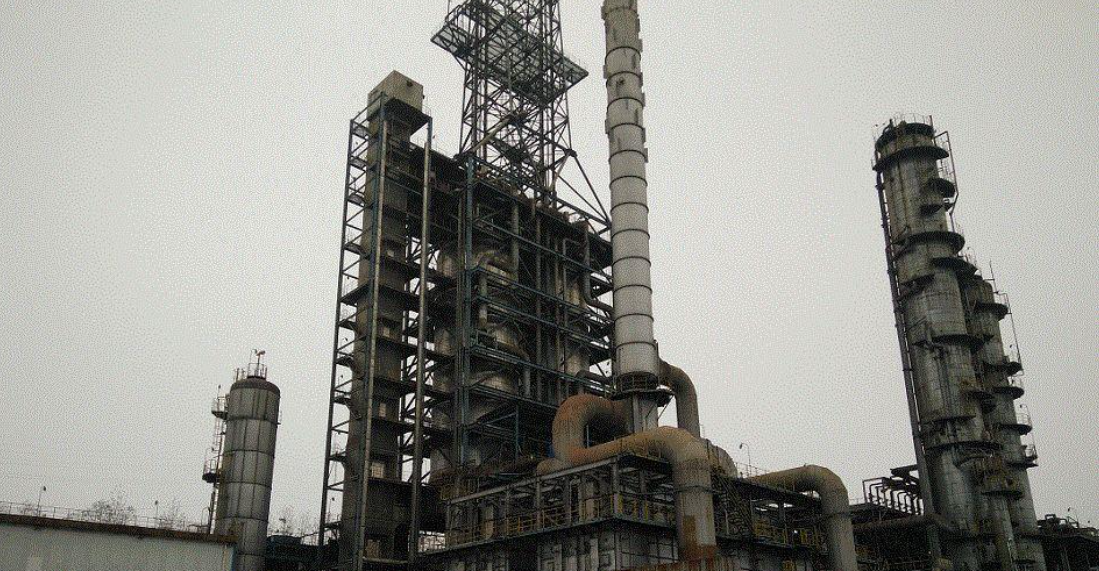Fixed bed catalytic device

The fixed bed catalytic device is also called a packed bed reactor. Catalytic reactor filled with solid catalysts or solid reactants to achieve a heterogeneous reaction process. The solids are usually in the form of granules, with a particle size of about 2-15mm, and pile up into a bed with a certain height (or thickness). The bed is stationary, and the fluid passes through the bed to react. The difference between it and fluidized bed reactor and moving bed reactor is that the solid particles are in a static state. Fixed-bed reactors are mainly used to realize gas-solid phase catalytic reactions, such as ammonia synthesis towers, sulfur dioxide contact oxidizers, and hydrocarbon steam reformers. When used in gas-solid phase or liquid-solid phase non-catalytic reactions, the bed is filled with solid reactants. A trickle-bed reactor can also be classified as a fixed-bed reactor, in which gas and liquid phase flow down through the bed in parallel, in a gas-liquid solid phase contact.
Classification of fixed-bed catalytic devices: There are three basic types of fixed-bed reactors: ①Axial adiabatic fixed-bed reactor. The fluid flows through the bed from top to bottom in the axial direction, and there is no heat exchange between the bed and the outside. ②Radial adiabatic fixed bed reactor. The fluid flows through the bed in the radial direction, centrifugal flow or centripetal flow can be adopted, and the bed has no heat exchange with the outside. Compared with the axial reactor, the radial reactor has a shorter fluid flow distance, a larger flow channel cross-sectional area, and a smaller fluid pressure drop. However, the structure of the radial reactor is more complicated than that of the axial reactor. The above two types are adiabatic reactors, which are suitable for occasions where the reaction heat effect is not large, or the reaction system can withstand the temperature change caused by the reaction heat effect under adiabatic conditions. ③Tube type fixed bed reactor. It is composed of multiple reaction tubes in parallel. The catalyst is placed in the tube or between the tubes, and the heating medium flows through the tubes or inside the tubes for heating or cooling. The diameter of the tube is usually between 25 and 50 mm, and the number of tubes can be as many as tens of thousands. Tubular fixed-bed reactors are suitable for reactions with large reaction heat effects. In addition, there are reactors composed of the above-mentioned basic forms in series, which are called multi-stage fixed-bed reactors. For example: when the reaction heat effect is large or the temperature needs to be controlled in sections, multiple adiabatic reactors can be connected in series to form a multi-stage adiabatic fixed-bed reactor, with heat exchangers or supplementary materials between the reactors to adjust the temperature, Operate under optimal temperature conditions.
Features: The advantages of the fixed bed reactor are: ①The backmixing is small, the fluid can be effectively contacted with the catalyst, and a higher selectivity can be obtained when the reaction is accompanied by a series of side reactions. ②The catalyst has low mechanical loss. ③Simple structure. The shortcomings of the fixed bed reactor are: ① When the heat transfer is poor and the reaction heat is very large, even the tubular reactor may have flying temperature (the reaction temperature is out of control, rises sharply, and exceeds the allowable range). ②The catalyst cannot be replaced during the operation, and the reaction that requires frequent regeneration of the catalyst is generally not suitable for use. Fluidized bed reactors or moving bed reactors are often used instead. The catalyst in the fixed-bed reactor is not limited to the granular form, and the net-like catalyst has been used in industry for a long time. Currently, honeycomb and fibrous catalysts have also been widely used. The fixed bed reactor is a kind of multiphase reactor that has been fully studied. There are many mathematical models describing the fixed bed reactor, which can be roughly divided into quasi-homogeneous models (without considering the concentration and temperature difference between fluid and solid) and There are two types of multiphase models (considering the difference in concentration and temperature between fluid and solid). Each type can be divided into models without backmixing and models with backmixing according to whether backmixing is considered. According to whether to consider the radial direction of the reactor The concentration gradient and temperature gradient are divided into one-dimensional model and two-dimensional model. Fixed-bed catalysis is usually used for pour point reduction of high-pour-point oils, or to produce more light oils, such as gasoline and diesel.
Our advantages: 1. Optimized process route and process operation.
2. Based on a deep understanding of energy saving and emission reduction, we have better solutions and original supporting facilities. They are reflected in: thorough recovery of waste water, maximum heat exchange utilization of side line waste heat, energy saving of machine pump frequency conversion, unique design of heating furnace, improved flue gas recovery, burner, soot blowing and other details, so that thermal efficiency is greatly improved. , Up to 90%.
